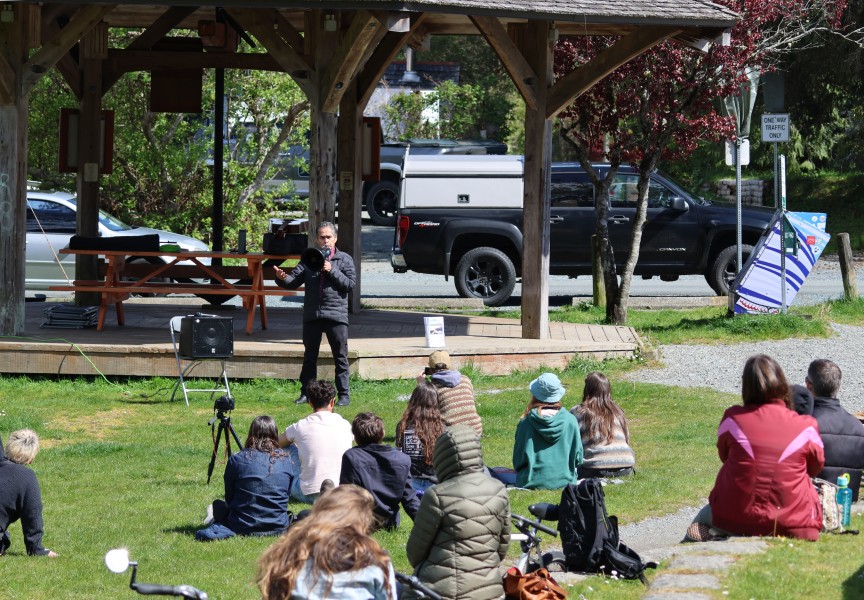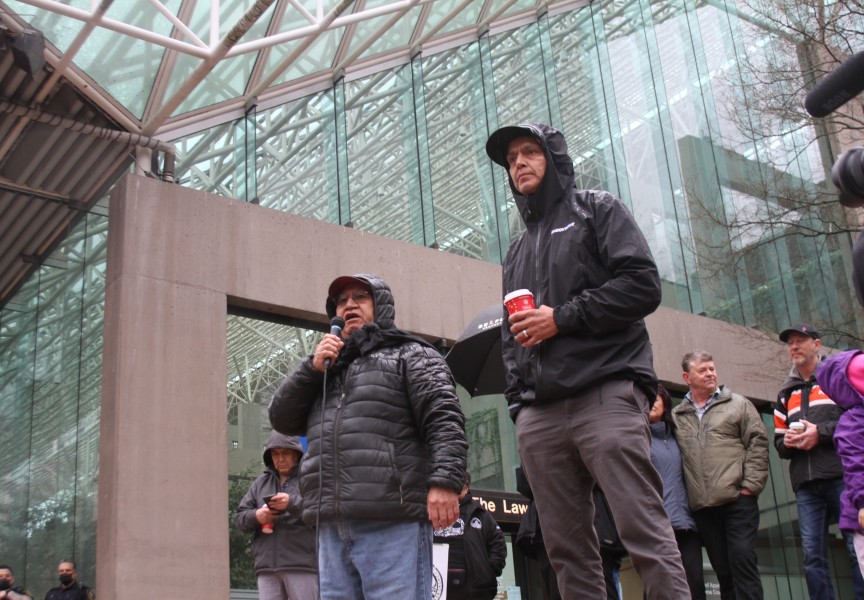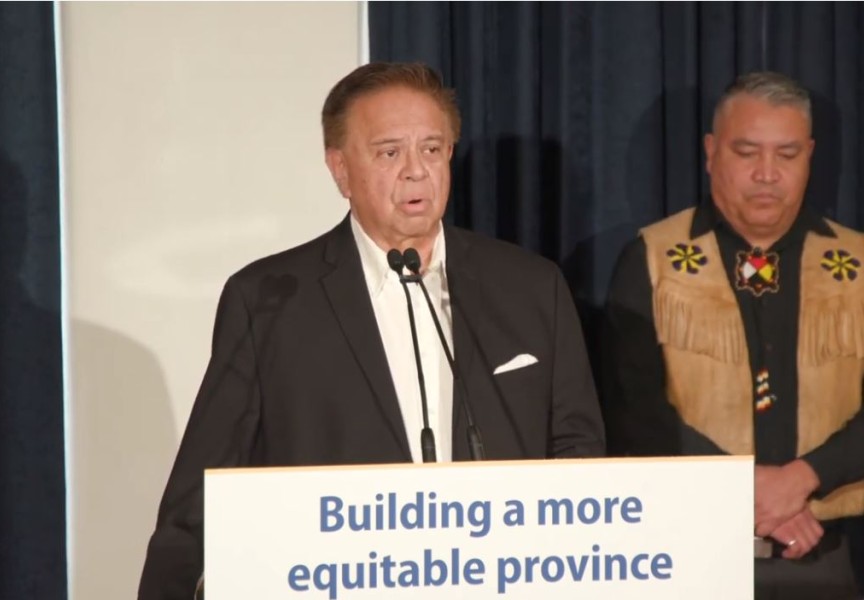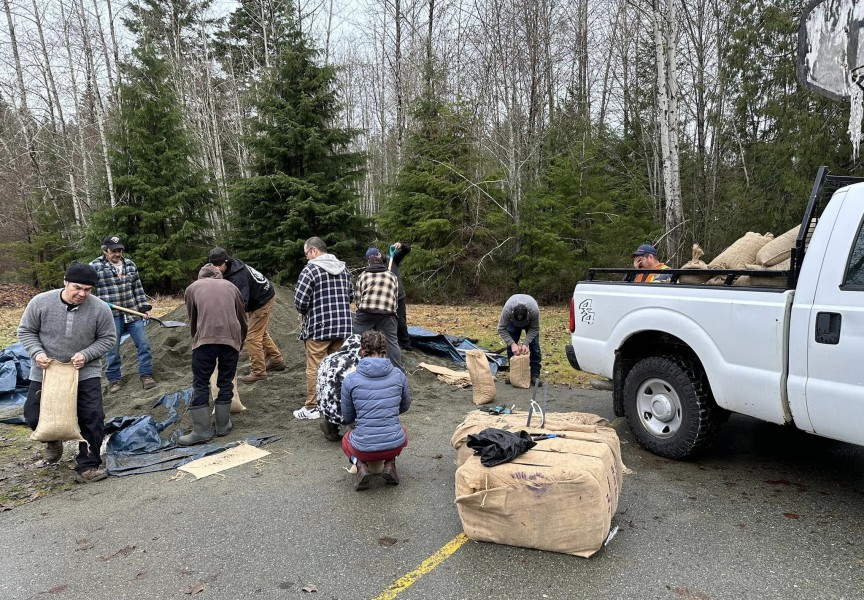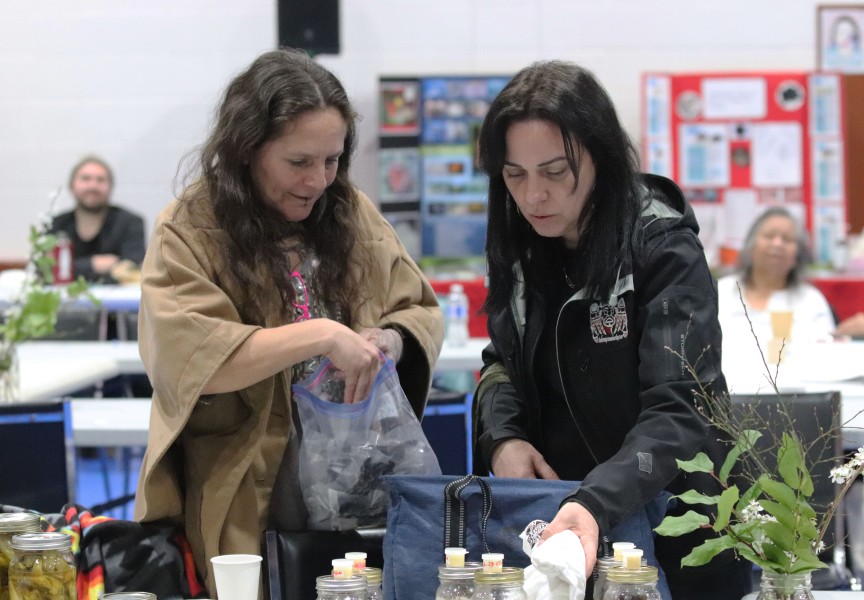With the overwhelming numbers of aboriginal children populating child welfare systems across the country, Canadians might be surprised to learn that a federal initiative announced in 2007 to prevent on-reserve children from entering care in the first place has yet to be rolled out in British Columbia.
The program is called Enhanced Prevention Focused Approach and $452 million has been spent over five years to 2012. But not a dime from that program has flowed to British Columbia’s delegated agencies to work with at-risk families in First Nations communities to prevent the removal of their children into protection.
“B.C. is not there yet,” said Aboriginal Affairs Minister Bernard Valcourt in an interview with Ha-Shilth-Sa March 19. He said Canada has “embraced” the Enhanced Prevention approach, but it is a gradual thing being rolled out across the country with several provinces not yet included.
“My own province, New Brunswick, is not yet. B.C. is not there yet. Ontario is not there yet. So, we have several provinces where we are not yet implementing this… the additional resources have not yet been identified to allow our implementation, but we are committed to doing it.”
Valcourt said Parliament must appropriate the necessary funds, and that taxpayers’ capacity to pay has to be respected.
“I am committed, our government is committed to continuing implementing this enhanced prevention approach, but it’s a question of time, I guess, before we can identify the resources.”
Nuu-chah-nulth Tribal Council President Debra Foxcroft just wants to see some equity. BC FN directors have been planning for the dollars over many years now since the program was announced, developing a framework for the funding, but the federal government continues to say no to prevention dollars flowing to B.C.
NTC has a delegated child welfare agency called Usma that, after almost 30 years of operation, is ready, willing and able to put these critical prevention dollars to good use, said Foxcroft.
“We’ve been saying B.C.’s been ready for a long time, and are wondering why other provinces have had this money for so long and why B.C. is being rejected…. Why do our children and families and youth have to wait?”
Minister Valcourt also told Ha-Shilth-Sa he is taking advice from the province’s Representative for Children and Youth, Mary Ellen Turpel-Lafond.
“I mean, she was adamant that we have to get more accountability on the part of the agencies that are delivering those services,” said Valcourt.
In November 2013, the Representative released a scathing report entitled “When Talk Trumped Service: A Decade of Lost Opportunity for Aboriginal Children and Youth in BC.” The report was critical of the province for its policies on Aboriginal governance endeavors over the past dozen years.
The minister, however, may be cherry picking which of the Representative’s recommendations to heed. The “Talk Trumped Services” report noted “While significant resources were going out the door, the DAA’s (Delegated Aboriginal Agencies) were mostly ignored and sometimes undermined as they struggled to provide services.” The Representative has also recommended AANDC fulfil its fiduciary responsibility to on-reserve children, and provide equitable access to services which are available to other children and youth.
Foxcroft cautions also about painting all delegated agencies with the same brush.
“We can talk about our experiences. You know, we are going on now 30 years of experience in child welfare. We are one of the first in British Columbia to have a delegated model. So we have the knowledge and experience. We’ve built capacity… I think we’ve done a good job of looking after our kids.”
Valcourt then told Ha-Shilth-Sa that prevention can be achieved within the current protection fiscal relationship. It’s not always a question of resources, he said, “but a way of doing things more efficiently, more effectively.”
It costs government more to take children into care and keep them there, said Foxcroft, than it would to support the child in their own home or have them with a relative or a placement that doesn’t have to go through the court system.
“It’s a high cost to bring children into care,” said Foxcroft.
“We know that intervention and prevention is key to keeping children out of care,” Foxcroft said. The majority of children that come into care, it’s because of neglect and because of poverty, she said. “And because of our past history of the residential school system, some of our families are lacking in parenting skills.”
“Our priorities are to support families, children and youth to make positive changes in their lives and have a healthy, happy nurturing environment for the child to live in,” Foxcroft said. Usma does what it can to use scant funding to keep children safe, loved and nurtured and their families intact.
But, “Usma operations funding under the federal 20-1 formula is less than it was in 1989,” said NTC Vice President Ken Watts. “So I find it very frustrating that we provide more accountability, our costs have increased and there is less funding flexibility than when Usma originally started.”
And operating in First Nations communities does have extra costs associated with it, including isolation, transportation and a lack of access to resources. “Other people in Canada that live in the cities or urban areas don’t have to deal with that extra cost and challenge,” said Foxcroft.
It’s about making an investment, said Watts.
“Invest in the program and provide that prevention funding and we’d have a lot less kids in care.”
Foxcroft agreed.
“We are at a critical stage in B.C. on getting the services to, not only the families, but the agencies that want to do a good job, and want to prevent our children coming into care. But they don’t have the supports and resources to be able to do that.”


